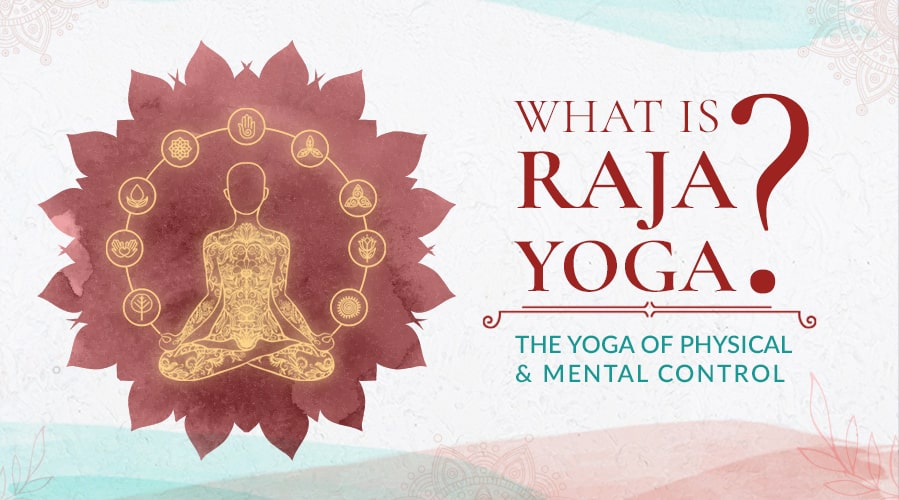
29 Mar 2023 HYN Himalayan Yoga Academy
The term ‘Raja’ means the ‘Royal’ or ‘king’ or ‘chief’, and ‘yoga’ means the ‘union’ thus Raja yoga refers to the chief union. It is a state where a practitioner experiences being at its utmost or supreme state of being. In the Shaiva Yogic text, Raja yoga is noted as a goal in which one experiences a calm state of natural peace and serenity.
Sage Patanjali mentioned Raja yoga as classical Yoga or Sahaja marg (easy way to mukti or liberation) in his yoga sutras. According to the Bhagavad Gita, there are Trimarga or the three paths of realization. Those three paths are mentioned as Karma Yoga; which is also known as the Path of action, Bhakti Yoga; which is also known as the path of devotion, and Jnana Yoga; which is known as the path of knowledge.
Later on, in the 19th century, Swami Vivekananda mentioned Raja Yoga as a fourth path of attainment of liberation. Four paths of liberation Karma yoga, Bhakti yoga, Jnana yoga, and Raja yoga in his book named raja yoga are suitable for four types of human personality active, the emotional, the philosophical, and the mystic respectively.
The Four Paths of Yoga
Yoga philosophy presents four paths toward enlightenment. It’s sometimes suggested that Raja Yoga is a superior path, because of the confusion caused by the “Yoga of Kings” myth. In truth, all four paths are equal. You can practice any one, or more than one, on your journey.
The four paths presented in yoga philosophy are:
- Karma Yoga (the Path of duty)
- Bhakti Yoga (the Path of devotion to purity)
- Raja Yoga (the Path of self-control)
- Jnana Yoga (the Path of knowledge of Self)
Hatha Yoga and Raja Yoga :
Hatha yoga is practiced and its knowledge is needed only to attain the state of Raja yoga or the Samadhi which is mentioned in Hatha yoga pradipika. The practice of Hatha yoga prepares our body for the attainment or the state of Raja yoga thus it is not the process but the state being happened.
Hatha yoga pradipika further elaborates Raja yoga as being one with the absolute self or dissolution of living self where one’s desires and cravings are dissolved or ended. When you add a spoonful of salt into the water and a moment later salt gets dissolved into water in such a way you can’t separate salt from water likewise raja yoga is a state of union or dissolution or the Samadhi or the sunya. This metaphorical example of salt and water to explain Raja Yoga is mentioned in Hatha yoga pradipika.
These days Raja yoga as the act of meditation is being practiced by Brahmakumaris in Brahmakumari Ishwariya maha Vidyalaya. It is taken as a sahaj marg or the easy way to attain salvation. The meditation taught in Brahmakumari in the name of Raja yoga has nothing to do with the concepts mentioned by Patanjali yoga sutras.
In your yoga practice journey, you can encounter this term so it’s better to know the concept. Being in a state of one with the supreme self is known as Raja Yoga. We practice seven limbs of yoga to attain the eighth limb the state of Samadhi or Raja Yoga.
How to Practice
Raja Yoga is considered a challenging practice because it requires consistent self-control. Luckily, it can be practiced at a level that fits your life and circumstance. You could be so moved by yoga philosophy that you decide to become a monk and give up all the chattels of material life. But more likely, you would prefer self-improvement without making such an extreme choice.
In Raja Yoga, there are eight specific practices presented in exact order. Patanjali, in the Yoga Sutras, declared that mastering each of these practices in order would lead to enlightenment.
The eight practices of Raja Yoga :
- The Yama – five areas to improve self-control and purify your intentions.
- The Niyama – five areas in which to purify your habits
- Asana – the physical practice to purify your body
- Pranayama – practiced using breathing exercises to purify the energy body
- Pratyahara – withdrawal from the senses to calm the senses and mind
- Dharana – concentration to control the mind
- Dhyana – meditation to understand the Self
- Samadhi – becoming liberated from the illusions of the outer world.
The Benefits :
- Through the dedicated practice of this Yoga, one develops detachment towards worldly objects, our thoughts, and the results of our actions
- It develops an understanding of our true nature and leads to the cultivation of inner peace and tranquility.
- Our character becomes purified, our virtues increase, and spiritual growth accelerates.
